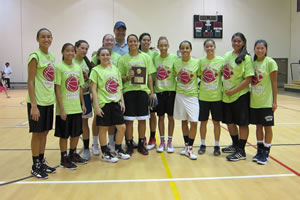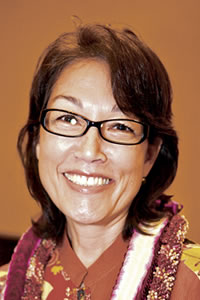Promoting Many Kinds Of Tourism
Hawaii Tourism Authority just reported that tourists spent $1.3 billion in Hawaii this past December, a record for the Islands. That figure was part of $12.58 billion in revenue the visitor industry generated in 2011, the second-highest total in history.Travelers from Canada, Australia, and Asia, excluding Japan, upped their numbers by 20 percent or more. Japan, which continues to struggle with last March’s natural disaster, showed gains in spending over 2010, even though the number of Japanese visitors fell 5.1 percent.
We can all hope this economic trend continues for the foreseeable future. As the state’s largest industry and top source of private sector employment and investment, a strong tourism industry means a healthy economy, more people working, and more tax revenue to underwrite public services.
Of course, we know that tourism can turn on a dime. In recent memory, Hurricane Iwa had a devastating impact on Kauai’s tourism economy as hotels were destroyed and remained shuttered for months. During the first Gulf War, tourism plummeted as people stayed home. The same happened in the aftermath of the terrorist attacks of Sept. 11. Last year’s Great Tohoku earthquake and tsunami in Japan caused an immediate drop in visitors from that country. There have been other economic crises and developments over the years that have triggered decreases in travel to Hawaii.
We also face stiff competition from other destinations. Mexico is currently billing itself as a cheaper alternative to the Hawaiian Islands. There are other Caribbean, South Pacific, and Southeast Asian destinations that are appealing to visitors who might otherwise visit Hawaii.
Then there are costs. Visitor spending reached record levels partly because hotel room rates have climbed. As Outrigger Enterprises Group President and CEO David Carey pointed out in a recent presentation to the Legislature, increases in taxes, utilities, payroll and fringe benefits, and related factors combine to push room rates higher and contribute to Hawaii being less competitive.That’s another reason we must continue to invest in tourism marketing and diversify our industry. Last week, I made mention of the opening of a Gachon University mini-campus in Waikiki that will bring 500 Korean students a year to study at local institutions. We need to continue our efforts to promote the sports industry, which attracts tens of thousands of athletes and fans alike for events like the Honolulu Marathon, NFL Pro Bowl, and Sony Open. And let’s not forget the benefits and exposure that a vibrant film and television industry brings to our economy, such as Hawaii 5-0 and The Descendants. There’s also agri-tourism, cuisine, cultural and historical tourism, and other means of moving beyond what I call our traditional five S’s: sun, sand, sea, surf, and spirit of aloha.
We also need to build on the momentum of last November’s Asia Pacific Economic Cooperation summit. APEC proved that Hawaii was an excellent location for business travel, but our investment of time and money will be for naught if we don’t follow-up in a collective and collaborative manner on what was a crowning achievement in this arena. Places such as New York, Chicago, and Washington, D.C., are prime destinations for meetings and conventions, and given our success with APEC, there’s no reason Hawaii can’t take its place among these cities, especially as a gathering place for business people from the PacificAsian region.
Jamboree
On Feb. 11, we held the 19th annual Mufi Hannemann Basketball Jamboree, the state’s only post-season showcase of girls basketball for all ages.
We established the jamboree in 1994 for local female student-athletes who were largely unrecognized locally, but were nonetheless well represented in the collegiate ranks. What began as a small step toward Title IX and gender equity has, in the years since, featured just about every top high school and college player in Hawaii at one time or another.
The Jamboree also gave us an opportunity to identify promising underclassmen for Team Aloha. So far, we’ve fielded five teams in almost as many years to compete at NCAA-sanctioned tournaments in Arizona and California, where the girls have been able to showcase their talents to college coaches and resulted in scholarships for a number of our wahine players. This year we’ll be taking our sixth squad to Los Angeles.
This exposure has been invaluable, while it’s also enabled our talented players to compete against seasoned club teams from the Mainland.





